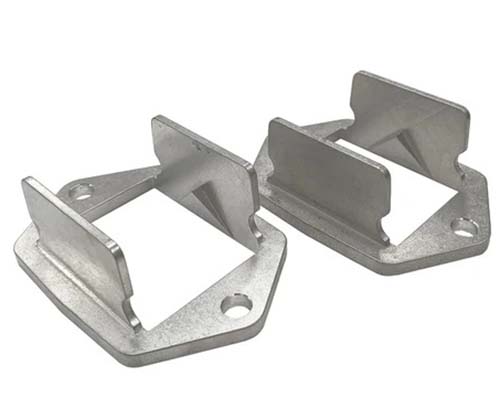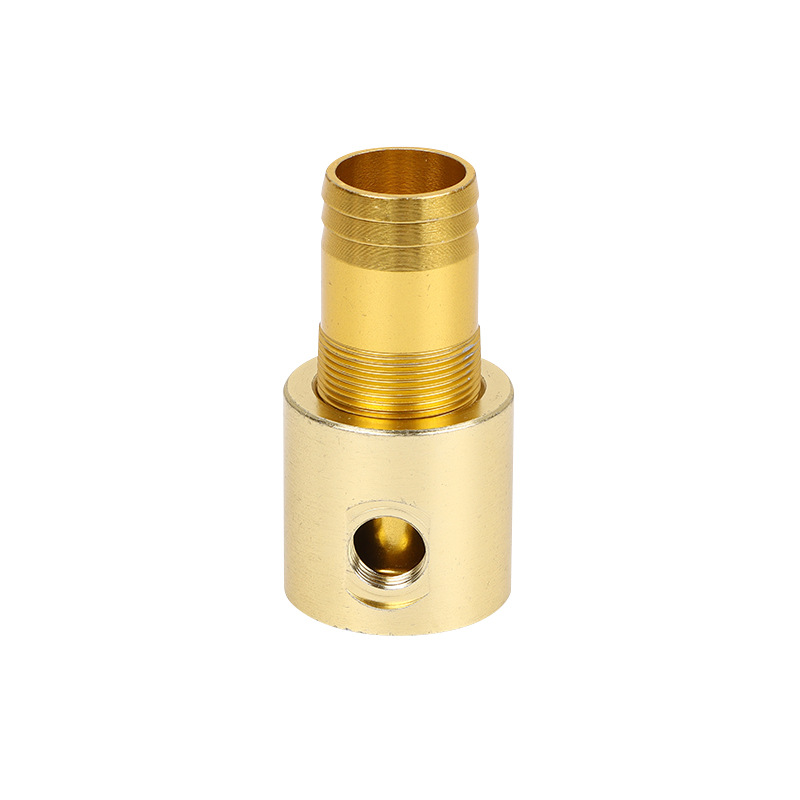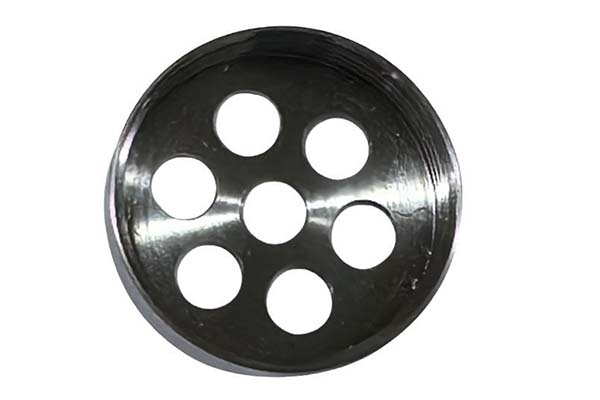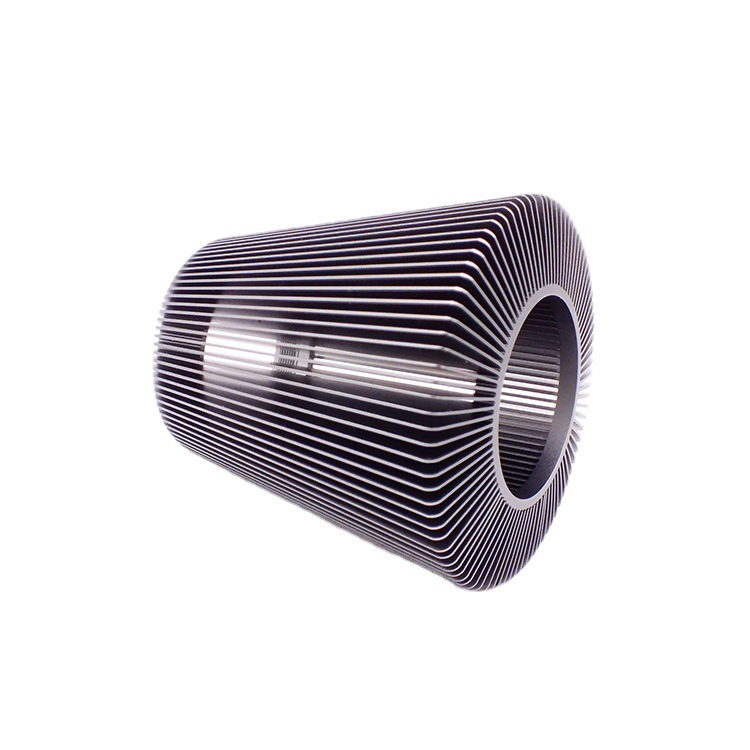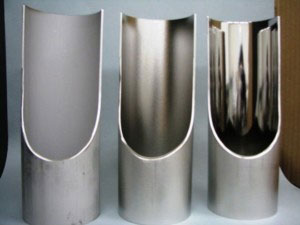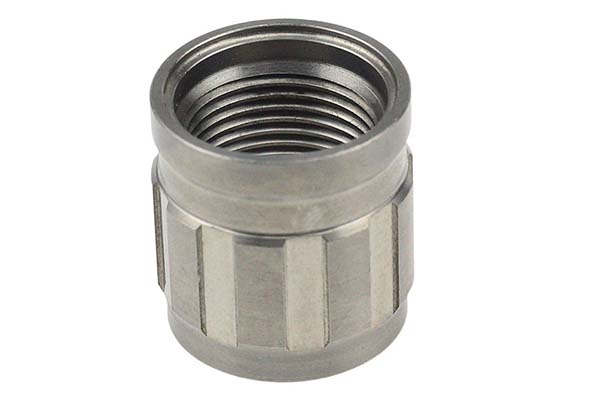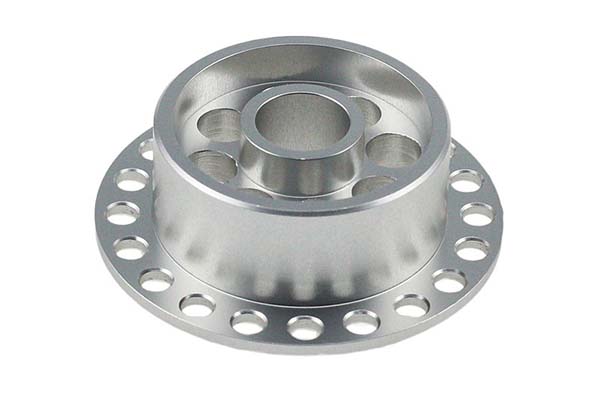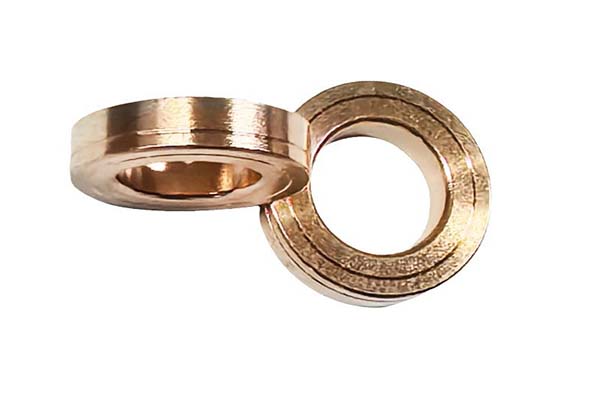Introduction
In the world of modern manufacturing, Short Run CNC Machining Services have emerged as a game - changer. These services offer a cost - effective and efficient solution for producing a small to moderate quantity of parts with high precision. Whether it's for prototyping new products, creating replacement parts, or producing small - batch custom items, short run CNC machining has become an indispensable tool for businesses across various industries.
The choice of materials in Short Run CNC Machining Services is of utmost importance. The material not only determines the physical properties of the final product such as strength, durability, and heat resistance but also impacts the machining process itself. Different materials have different machinability ratings, which can affect factors like cutting speed, feed rate, and tool life. For example, a soft material may be machined more quickly but might require more careful handling to prevent deformation, while a hard material could pose challenges in terms of tool wear but offer greater strength in the finished part. In the following sections, we will explore the various types of materials commonly used in short run CNC machining, their unique characteristics, and their ideal applications.
Common Metal Materials for Short Run CNC Machining
Aluminum Alloys
Aluminum alloys are widely used in short run CNC machining due to their remarkable properties. First and foremost, they are lightweight, with a density approximately one - third that of steel. This makes them ideal for applications where weight reduction is crucial, such as in the aerospace and automotive industries. For instance, in aircraft manufacturing, the use of aluminum alloys can significantly reduce the weight of the aircraft, thereby improving fuel efficiency and performance.
Moreover, aluminum alloys offer high strength - to - weight ratios. Some alloys can achieve high strength levels, making them suitable for parts that need to withstand significant mechanical stresses. They also have excellent corrosion resistance, especially when properly treated with surface coatings like anodizing. This property extends the lifespan of the components, reducing maintenance costs.
In terms of machinability, aluminum alloys are easy to process. They have a relatively low hardness, which allows for high - speed machining with less tool wear. This results in shorter machining times and lower production costs. Two of the most common aluminum alloys used in short run CNC machining are 6061 and 7075.
6061 aluminum alloy contains magnesium and silicon as its major alloying elements. It has medium strength, good corrosion resistance, and excellent weldability. This alloy is widely used in applications such as automotive parts, bicycle frames, and general - purpose mechanical components. For example, many automotive engine parts are made of 6061 aluminum alloy due to its ability to withstand high - temperature and mechanical stress while maintaining its structural integrity.
7075 aluminum alloy, on the other hand, contains zinc, magnesium, and copper. It is known for its high strength, being one of the strongest aluminum alloys available. It has excellent fatigue resistance and is often used in aerospace applications, such as aircraft wings and fuselage components, as well as in high - performance sports equipment like bicycle components for professional cyclists who demand the highest strength - to - weight ratio. However, 7075 is more expensive than 6061 due to its higher alloy content and more complex manufacturing process.
Stainless Steels
Stainless steels are another popular choice for short run CNC machining, mainly because of their outstanding corrosion resistance. This property makes them suitable for a wide range of applications, especially those in harsh environments. Stainless steels contain a minimum of 10.5% chromium, which forms a thin, invisible oxide layer on the surface, protecting the metal from further oxidation and corrosion.
There are different series of stainless steels, with 304 and 316 being two of the most common ones. 304 stainless steel, also known as 18/8 stainless steel (due to its approximate 18% chromium and 8% nickel content), is highly versatile. It has good corrosion resistance in most normal environments, excellent formability, and can be easily welded. This makes it suitable for applications in the food and beverage industry, such as food processing equipment, as well as in architecture for decorative elements like handrails and facades. For example, many commercial kitchens use 304 stainless - steel countertops and sinks because they are easy to clean, hygienic, and resistant to corrosion from food acids.
316 stainless steel is an upgraded version of 304, with the addition of molybdenum (about 2 - 3%). This extra element significantly improves its corrosion resistance, especially in chloride - rich environments. As a result, 316 stainless steel is often referred to as "marine - grade" stainless steel and is widely used in marine applications, such as shipbuilding, offshore oil and gas platforms, and in chemical processing plants where it may come into contact with corrosive chemicals. For instance, the pipes and fittings used in seawater desalination plants are typically made of 316 stainless steel to withstand the highly corrosive nature of seawater. However, due to the addition of molybdenum, 316 stainless steel is more expensive than 304 and also has a slightly higher machining difficulty.
Copper and Its Alloys
Copper and its alloys, such as brass and bronze, are also utilized in short run CNC machining, thanks to their unique properties. Copper itself has excellent electrical and thermal conductivity, second only to silver among common metals. This makes it an ideal material for applications in the electrical and electronics industries, such as in the production of electrical connectors, wires, and heat sinks.
Brass, an alloy of copper and zinc, combines the good formability and corrosion resistance of copper with improved strength and hardness. It has a golden - yellow appearance and is often used in decorative applications, such as in the production of decorative hardware, musical instruments, and plumbing fittings. For example, many high - end door handles and faucets are made of brass due to its attractive appearance and corrosion resistance. Brass also has good machinability, with a relatively low cutting force required during machining, which results in less tool wear and the ability to achieve high - quality surface finishes.
Bronze, an alloy of copper and tin (and sometimes other elements like phosphorus, aluminum, or silicon), has a high strength, excellent wear resistance, and good corrosion resistance. It is commonly used in applications where these properties are essential, such as in the manufacturing of bearings, bushings, and gears. For instance, in high - performance engines, bronze bearings are used to reduce friction and wear between moving parts, ensuring smooth operation and long - term reliability. Bronze is also used in art and sculpture due to its aesthetic appeal and the ease with which it can be cast into complex shapes.
Popular Plastic Materials in Short Run CNC Machining
Acrylonitrile Butadiene Styrene (ABS)
ABS is a widely used thermoplastic polymer in short run CNC machining. It is a terpolymer composed of acrylonitrile, butadiene, and styrene, which endows it with a well - balanced set of properties.
Properties and Machining Advantages
ABS has excellent impact resistance, which means it can withstand sudden impacts without easily breaking. This property makes it suitable for parts that may be subject to physical stress during use. For example, in the production of consumer electronics such as mobile phone cases and laptop housings, ABS can protect the internal components from minor drops and impacts.
It also has good dimensional stability. During the CNC machining process, parts made of ABS can maintain their shape and size accurately, which is crucial for applications that require high - precision fits, like in the automotive industry for interior components such as dashboards and door panels. ABS is relatively easy to machine. It has a lower melting point compared to some other plastics, allowing for faster cutting speeds without excessive heat generation that could cause material deformation. This results in shorter machining times and lower production costs for small - batch manufacturing. Additionally, ABS can be easily colored, which gives designers the flexibility to create products with different aesthetic appearances.
Applications
The applications of ABS in short run CNC machining are extensive. In the toy industry, it is commonly used to produce various toys, especially those with complex shapes. The easy - to - machine nature of ABS allows for the creation of detailed and intricate toy designs. In the field of prototyping, ABS is a popular choice. Designers can quickly turn their ideas into physical prototypes using CNC machining with ABS, enabling them to test and refine their product concepts before mass production.
Polycarbonate (PC)
Polycarbonate is a high - performance thermoplastic that offers several distinct advantages for short run CNC machining.
Properties and Machining Advantages
One of the most notable properties of PC is its high transparency. It has a light transmittance of up to 88 - 92%, making it an ideal material for applications where optical clarity is required, such as in the production of lenses, light covers, and transparent enclosures. For example, in the lighting industry, PC is used to make lamp shades that not only protect the light source but also allow for maximum light transmission.
PC also exhibits outstanding impact strength. It can endure high - energy impacts without shattering, which is why it is used in applications like safety helmets, riot shields, and automotive bumpers. Its heat resistance is another advantage. PC can maintain its mechanical properties at relatively high temperatures, with a heat - deflection temperature typically around 135 - 143°C (under a certain load), making it suitable for parts that may be exposed to heat during operation, such as in electrical and electronic devices. Although PC is a relatively hard plastic, it can still be machined with the right tools and parameters. However, due to its high strength and toughness, it may require more powerful machining equipment and sharper cutting tools compared to some softer plastics like ABS.
Applications
In the electronics industry, PC is used for manufacturing components such as computer monitor frames, mobile phone screens, and electrical connectors. In the automotive industry, it is applied in the production of headlamp lenses, instrument panels, and exterior body parts due to its combination of strength, transparency, and heat resistance.
Polyethylene (PE) and Polypropylene (PP)
Polyethylene and polypropylene are two common polyolefin plastics that find applications in short run CNC machining, each with its own unique characteristics.
Properties and Machining Advantages
Polyethylene (PE)
PE is known for its low cost, which makes it an attractive option for cost - sensitive applications. It has excellent chemical resistance, being able to withstand a wide range of chemicals, acids, and alkalis. This property makes it suitable for applications in the chemical and pharmaceutical industries, such as the production of chemical storage containers and pharmaceutical packaging. PE comes in different densities, with low - density polyethylene (LDPE) being more flexible and high - density polyethylene (HDPE) being more rigid. LDPE is often used in applications where flexibility is required, like in the production of plastic bags and flexible tubing. HDPE, on the other hand, is used for making more rigid products such as water pipes and large - scale storage tanks. PE has a relatively low melting point, which can pose challenges during CNC machining as it may soften or deform if the machining temperature is not properly controlled. However, with the right cooling and machining parameters, these issues can be mitigated.
Polypropylene (PP)
PP also offers cost - effectiveness and good chemical stability. It has a higher melting point than PE, typically around 160 - 170°C, which gives it better heat resistance. This makes PP suitable for applications that require exposure to higher temperatures, such as food packaging that may undergo heat - sterilization processes. PP is stiffer and more rigid than LDPE, with better tensile strength, making it suitable for products that need to maintain their shape under stress, like automotive interior components and plastic furniture. In terms of machinability, PP can be processed using CNC techniques, but it may have a higher shrinkage rate during cooling compared to some other plastics. This needs to be taken into account during the design and machining process to ensure accurate part dimensions.
Differences and Applicable Scenarios
When comparing PE and PP, their differences in density, melting point, and rigidity determine their different application scenarios. For example, if a product requires high flexibility and a lower cost, LDPE might be the better choice, such as in the production of disposable plastic products. If a product needs to withstand higher temperatures and has higher stiffness requirements, PP would be more suitable, like in the manufacturing of kitchenware that can be used in the microwave.
Comparison Table of Metal and Plastic Materials
To provide a more straightforward comparison between metal and plastic materials commonly used in short run CNC machining, the following table outlines their differences in key aspects:
| Property | Metals (e.g., Aluminum Alloy, Stainless Steel) | Plastics (e.g., ABS, Polycarbonate) |
| Density | Generally higher. For example, the density of aluminum alloy is about 2.7 g/cm³, and stainless steel is around 7.9 g/cm³. | Generally lower. ABS has a density of about 1.05 g/cm³, and polycarbonate is around 1.2 g/cm³. |
| Strength | High strength, especially in alloys like 7075 aluminum alloy and high - grade stainless steels. Can withstand significant mechanical stress and load. | Varies. Some plastics like polycarbonate have high impact strength, but overall, they are generally not as strong as metals in terms of tensile and compressive strength. |
| Cost | Higher cost, especially for alloys with special elements like 7075 aluminum alloy and 316 stainless steel. | Lower cost in general, especially for common plastics like ABS, PE, and PP. |
| Machining Difficulty | Some metals can be challenging to machine due to their hardness, which may require specialized tools and techniques. However, materials like aluminum alloys are relatively easy to machine. | Generally easier to machine, with lower melting points allowing for faster cutting speeds. But high - performance plastics like polycarbonate may require more careful machining to avoid heat - induced deformation. |
| Heat Resistance | Metals generally have high heat resistance. For example, stainless steel can withstand high temperatures in industrial applications. | Plastics have lower heat resistance. For instance, ABS starts to soften at relatively low temperatures compared to metals, while polycarbonate has a better heat - deflection temperature but is still lower than most metals. |
| Chemical Resistance | Good chemical resistance, especially stainless steels in various corrosive environments. | Varies. Some plastics like PE and PP have excellent chemical resistance, while others may be more sensitive to certain chemicals. |
| Electrical Conductivity | Good electrical conductivity, especially for metals like copper and its alloys. | Generally poor electrical conductivity, making them suitable for insulating applications. |
Factors to Consider When Selecting Materials for Short Run CNC Machining
Mechanical Properties Requirements
The mechanical properties of a material are fundamental when choosing materials for short run CNC machining. Strength is crucial as it determines the ability of the part to withstand external forces without breaking or deforming. For load - bearing components in machinery, a high - strength material like 7075 aluminum alloy or certain high - grade stainless steels may be required.
Hardness is another key factor. Harder materials are more resistant to wear and can maintain their shape better under friction. In applications such as cutting tools or parts that experience constant rubbing against other surfaces, materials with high hardness are preferred. However, extremely hard materials can also pose challenges during machining, often requiring specialized tools and slower cutting speeds.
Toughness is the ability of a material to absorb energy and deform plastically before fracturing. It is essential for parts that may be subjected to impact or sudden loads. For example, in the manufacturing of safety - related components like automotive bumpers or industrial machinery guards, tough materials such as polycarbonate plastics or certain steel alloys are used to ensure they can withstand unexpected impacts without shattering.
Cost Constraints
Cost is a significant factor in the material selection process for short run CNC machining. The material cost itself varies widely depending on the type of material. Metals like titanium and certain high - alloy steels are generally more expensive compared to common aluminum alloys or plastics. For cost - sensitive projects, materials such as ABS plastic, which is relatively inexpensive, or 6061 aluminum alloy, which offers a good balance of cost and performance, may be more suitable.
In addition to the material purchase price, the processing cost also needs to be considered. Some materials are more difficult to machine, which can increase the processing cost. For instance, stainless steels, especially those with high hardness, can cause more rapid tool wear during CNC machining. This means more frequent tool replacements, which adds to the overall cost. On the other hand, materials like aluminum alloys are easier to machine, allowing for higher - speed machining and lower processing costs. When dealing with tight budgets, choosing materials with good machinability can help keep the overall production cost down.
Application Environment
The environment in which the final product will be used is a critical factor in material selection. Temperature is an important environmental consideration. If the part will be exposed to high temperatures, materials with high heat resistance should be chosen. Metals such as stainless steels can withstand high - temperature environments in industrial furnaces or engine components. For plastics, materials like polycarbonate, which has a relatively high heat - deflection temperature, may be suitable for applications where moderate heat exposure is expected, such as in some electrical components.
Humidity and chemical corrosiveness are also significant factors. In humid or wet environments, corrosion - resistant materials are essential. Stainless steels are a popular choice due to their inherent corrosion - resistance properties. For applications in chemical processing plants or marine environments where exposure to corrosive chemicals or saltwater is common, materials like 316 stainless steel or certain high - performance plastics with chemical - resistant properties are used. These materials can prevent degradation and ensure the long - term functionality of the parts.
Yigu Technology's View
At Yigu Technology, as a non - standard plastic metal products custom Supplier, we understand the significance of material selection in Short Run CNC Machining Services. With years of experience in the field, we have witnessed firsthand how the right material can transform a simple design into a high - performing product.
We have a diverse range of materials at our disposal, allowing us to meet the unique needs of each project. Whether it's choosing the appropriate aluminum alloy for its lightweight yet strong properties in aerospace - related prototypes or selecting a specific plastic like ABS for cost - effective and impact - resistant consumer product parts, our team is well - versed in material applications.
Our strength lies in our ability to not only provide the materials but also offer expert advice on how to optimize the machining process for each material type. We continuously invest in research and development to stay updated with the latest advancements in materials and machining techniques, ensuring that our clients receive the best - quality products with the most suitable materials for their short - run CNC machining projects.
